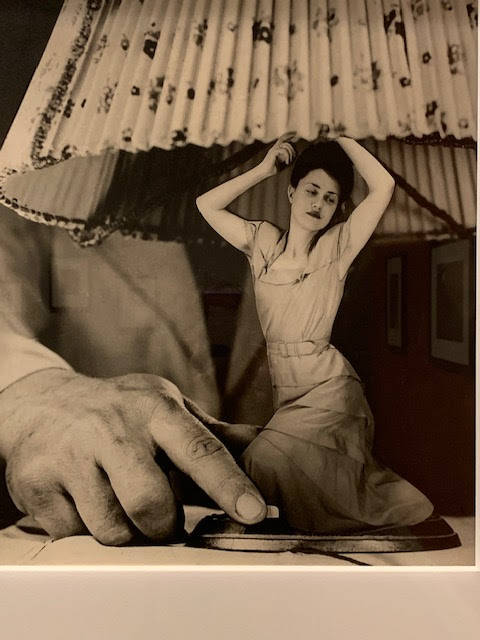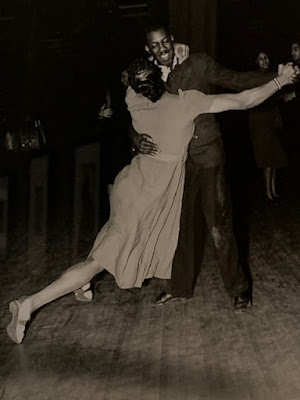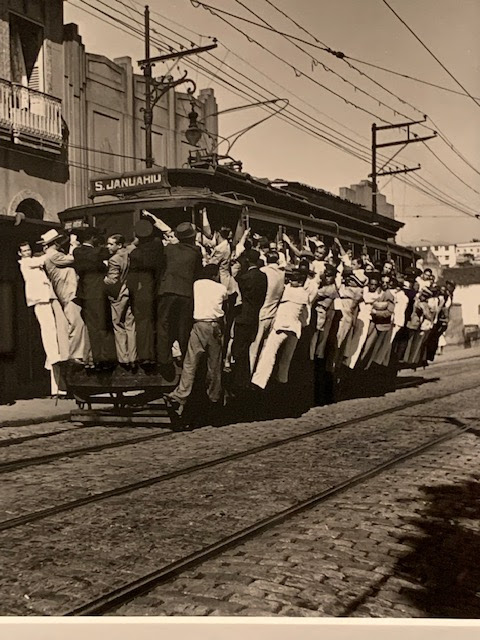
Alma W. Thomas, Red Roses Sonata (detail), 1972, The Metropolitan Museum of Art, gift of Longview Foundation, Inc. Ms. Thomas attended concerts at The Phillips and credited rock and roll with many of her titles.
Alma W. Thomas, Mars Reflection (detail), 1972, The CIA. Ms. Thomas found inspiration in a dust storm on Mars which, in 1971, delayed images from a U.S. spacecraft, the first to orbit another planet besides Earth.
Elka M. Stevens (b. 1968), re-creation of the dress designed by Maceo E. McCray for Alma Thomas's Fisk University and Whitney Museum exhibition openings, loaned by The Columbus Museum/Photo by Patricia Leslie
Alma W. Thomas, They Laid Him in the Tomb, c. 1958, Paolo Luptak
Alma W. Thomas, Sketch for March on Washington, c. 1963 or 1964 (depending upon the source), The Columbus Museum, gift of Miss John Maurice Thomas, in memory of her parents and sister, Alma Thomas. Although Alma Thomas seldom participated in political movements, she marched on August 28, 1963 with her sister and thousands of others, including Josephine Baker, Lena Horne, and Paul Newman. A detail of this painting became a U.S. postage stamp in 2005.
Whoa!
For those who think it's too late, those do not know about Alma Thomas, DC celebrated artist extraordinaire who didn't really get her start until her 70s, after she retired from 35* years of teaching which then gave her time to "blossom."
Which she did at her own home, gazing outside her windows to see magnificent gifts of nature presented in dazzling array which often became part of her paintings which evolved into astonishing vertical lines of bright colors.
Her vehicle to happiness, she said, was color which is where her works take viewers.
Said Ms. Thomas: "Through color I have sought to concentrate on beauty and happiness in my painting rather than on man's inhumanity to man....Color is life, and light is the mother of color."
Alma Thomas (1891-1978) was an abstractionist who enjoyed many firsts: At age 81, she became the first black woman to enjoy a solo exhibition at the Whitney Museum of America Art; she was the first fine arts graduate at Howard University.
She never abandoned learning, earning a master's from Columbia University and traveling to larger cities and museums to absorb their sights and treasures.
After her retirement, she made her art debut at Howard in 1966 and at age 75, her career took off.
She was born in Columbus, Georgia but moved to Washington with her family when she was 16, to a house where Ms. Thomas lived the rest of her life (and is now on the National Register of Historic Places).
Like springtime's bouquet which inspired her, Ms. Thomas brings us the same stimulating colors and bright canvases to the Phillips Collection exhibition in contrast with the dark and cold winter.
Read the labels and learn that the show is much more than art: It sheds light on the many achievements by Ms. Thomas who resisted being categorized as a "black" or a "woman" artist. Let art stand on its own, she said. Note how her styles changed over the years.
In a private transaction last year, Wikipedia says her painting Alma's Flower Garden sold for $2.8 million. You don't have to be a youngster or a rich world traveler to claim success: You just have to keep up with what you love to do!
You see what art can do!
I don't know anyone who thinks the show is anything less than fantastic.
*(or 38, depending upon the source)
What: Alma W. Thomas: Everything is Beautiful
When: Through Sunday, January 23, 2022, 11 a.m. - 6 p.m.
Where: The Phillips Collection, 1600 21st St., N.W. at Q St., Washington, D.C. 20009
Admission: $16, adults; $12 for those over 62; $10, students and educators (with ID); free for members and for children 18 and under. Timed tickets are required, but members may walk in at any time. Visitors 12 and over must show proof of vaccination or a same-day negative COVID-19 test upon entry, along with a government-issued photo ID for visitors 16 and over.
Metro Station: Dupont Circle (Q Street exit. Turn left and walk one block.)
For more information: 202-387-2151
Patricialesli@gmail.com













































